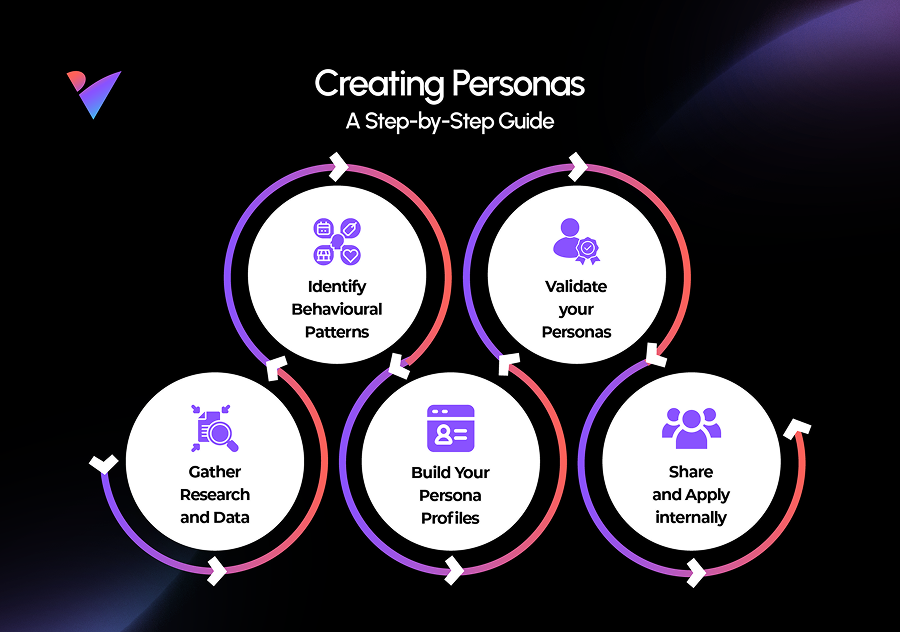Author name
March 27, 2024
Technology

Understanding your audience is key to creating products, services, and marketing campaigns that truly resonate. That’s where Persona development comes in. A persona is a fictional, data-driven profile that represents a specific segment of your audience. Creating detailed personas helps you align your strategies with real customer needs, behaviours, and pain points.
In this guide, we’ll walk you through the step-by-step process of creating personas so you can enhance user experiences, streamline communication, and boost your business outcomes.
Persona development is the strategic process of creating fictional but realistic representations of your ideal customers or users. These personas are based on data, insights, and real behaviours—not guesses or stereotypes. Each persona should reflect:
Whether you’re building software, selling services, or crafting ad copy, personas provide direction and focus.
Key Features:

Step 1: Gather Research and Data
The first step in persona development is collecting both qualitative and quantitative data from real users. Data sources include:
Aim to learn about user goals, behaviours, frustrations, and buying patterns.
Step 2: Identify Behavioural Patterns
Analyse the data to find common themes and patterns. These groupings can be based on:
Each group you identify can become the foundation for a unique persona.
Step 4: Validate your Personas
Before full-scale adoption, test your personas with stakeholders or even customers. Ask:
Revise based on feedback to ensure accuracy and relevance.
Step 5: Share and Apply internally
Don’t let your personas collect digital dust. Share them across all departments:
Integrate persona development into your workflows, roadmaps, and content calendars.
Exploring Microsoft Dynamics 365 reveals a platform rich with benefits and some disadvantages, yet it remains a highly valuable tool for businesses based on their unique needs. Despite the drawbacks, Dynamics 365's scalable architecture and cloud-based solutions make it an indispensable asset for organizations aiming to stay agile and competitive. Ultimately, the decision to adopt Dynamics 365 should be guided by a thorough evaluation of how its features align with specific business objectives and requirements. For more information, visit our Microsoft Dynamics 365 solutions.
Discover how Sentiment Tracking can redefine your customer relationships, enhance decision-making, and position your brand at the forefront of success.